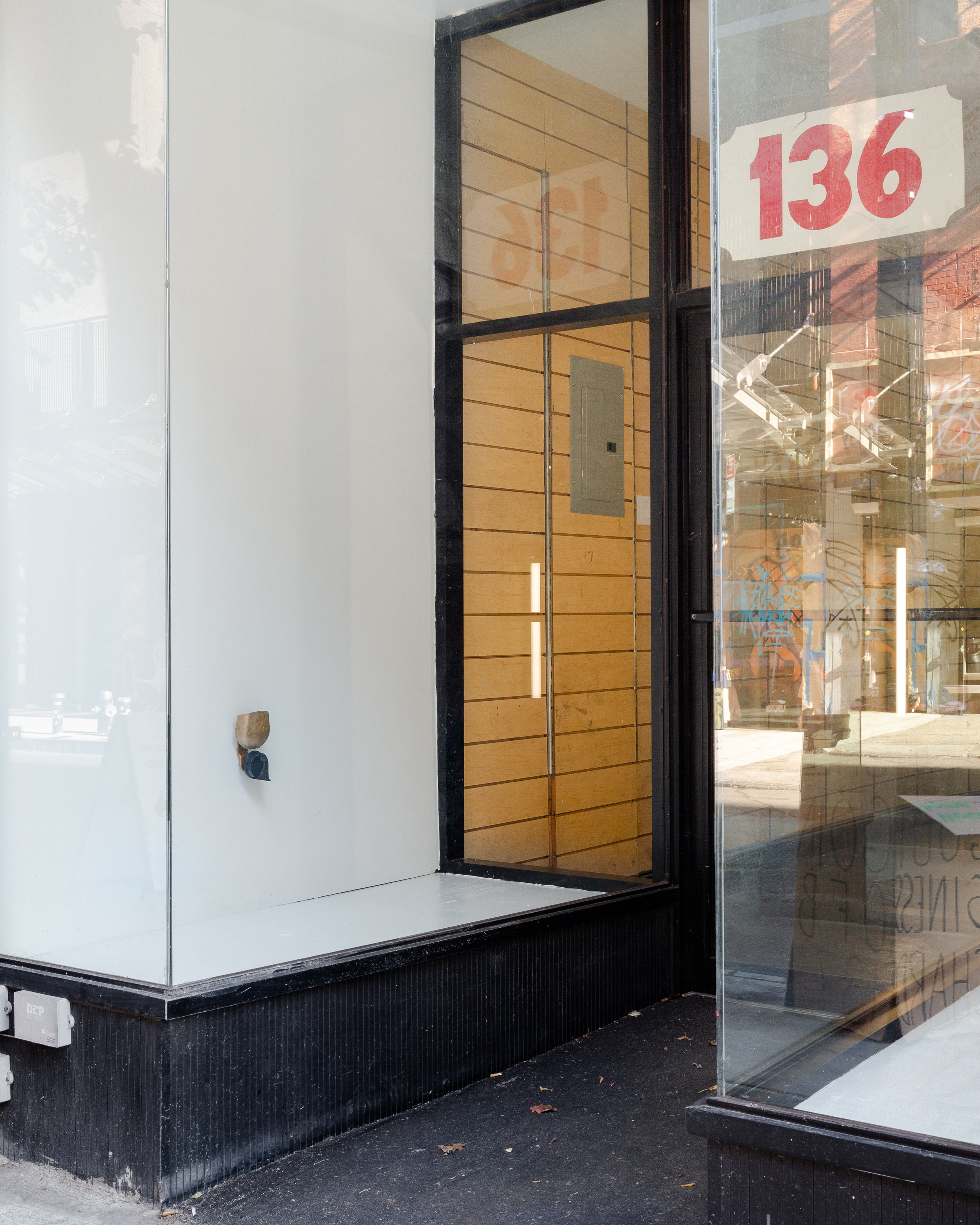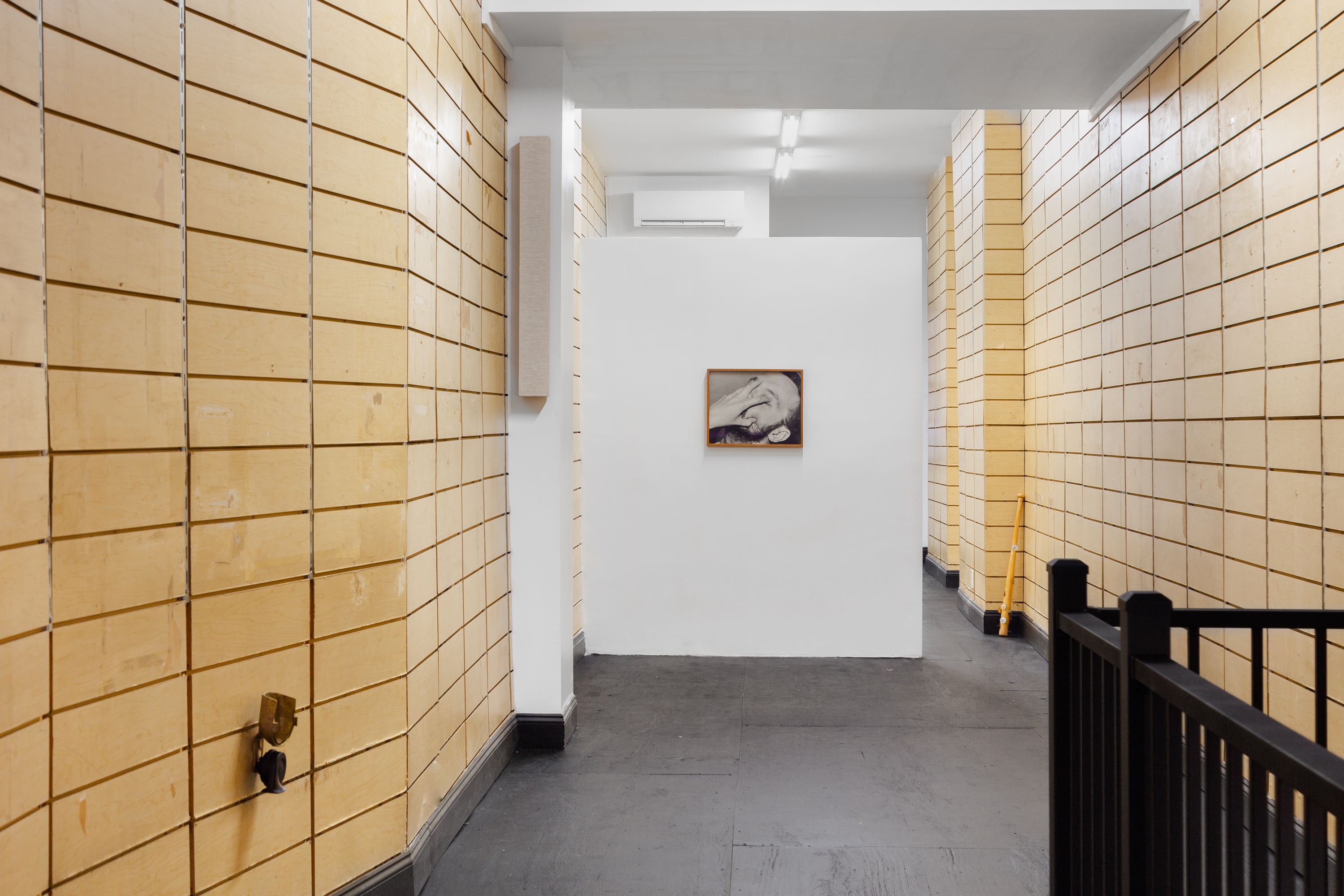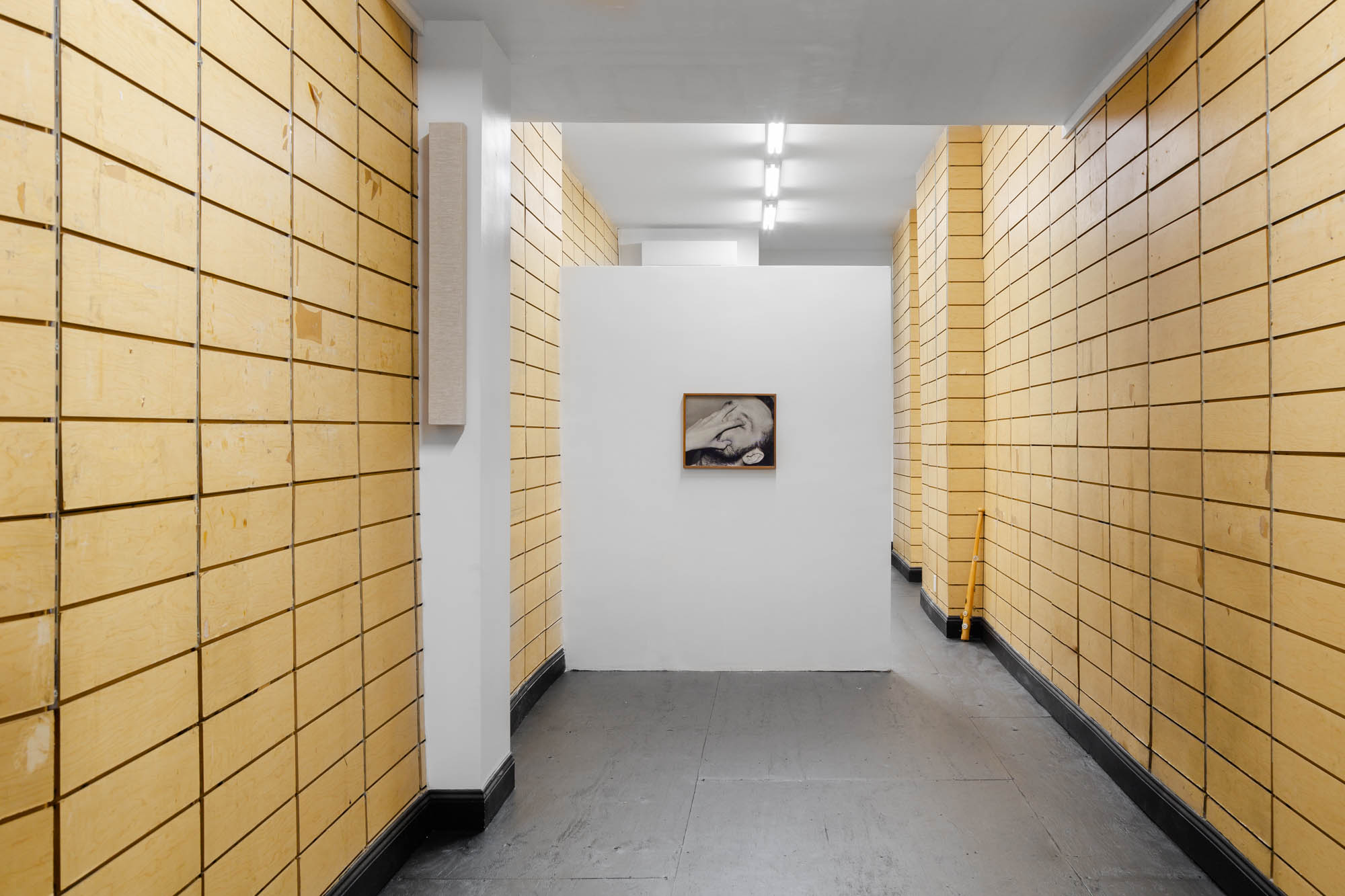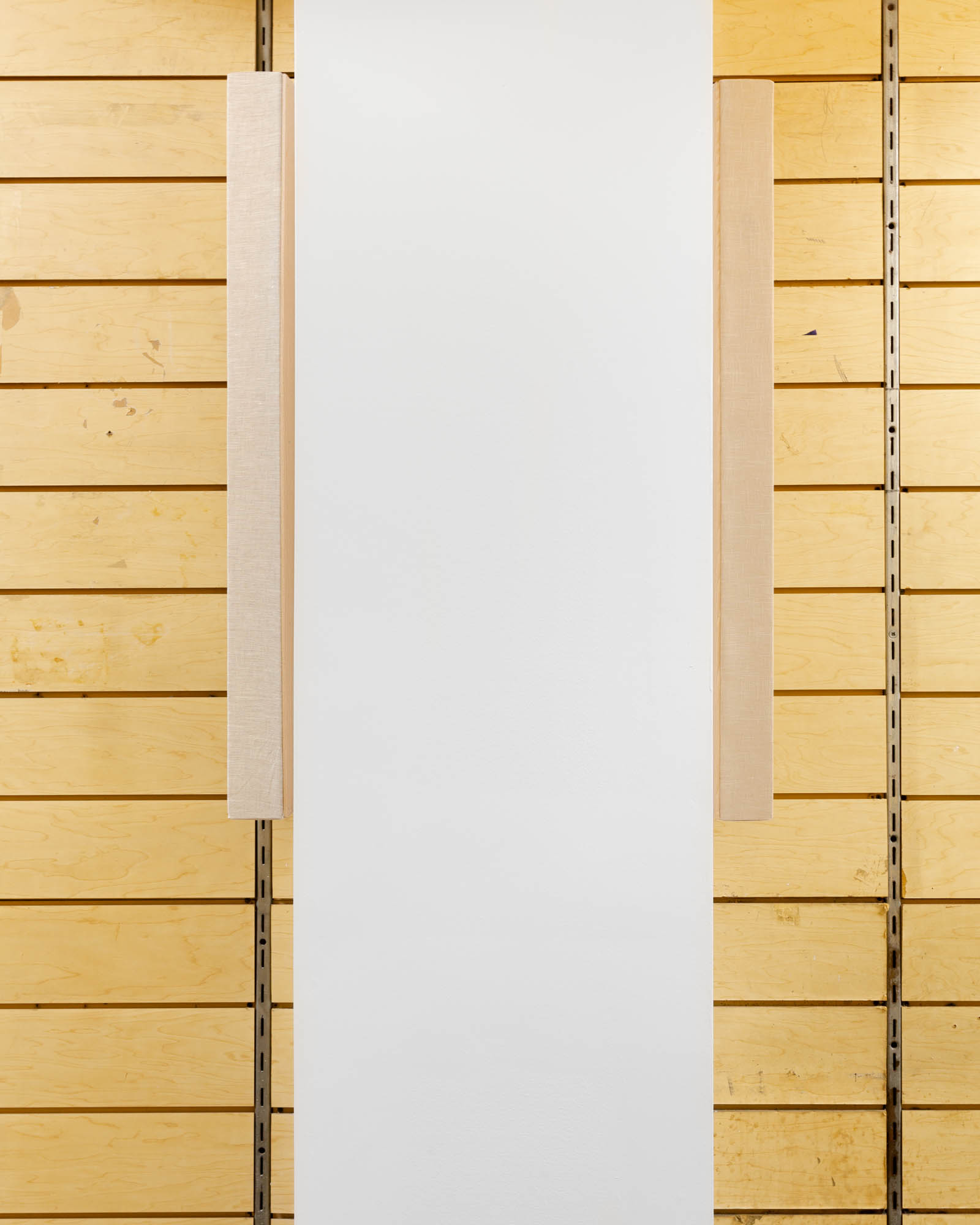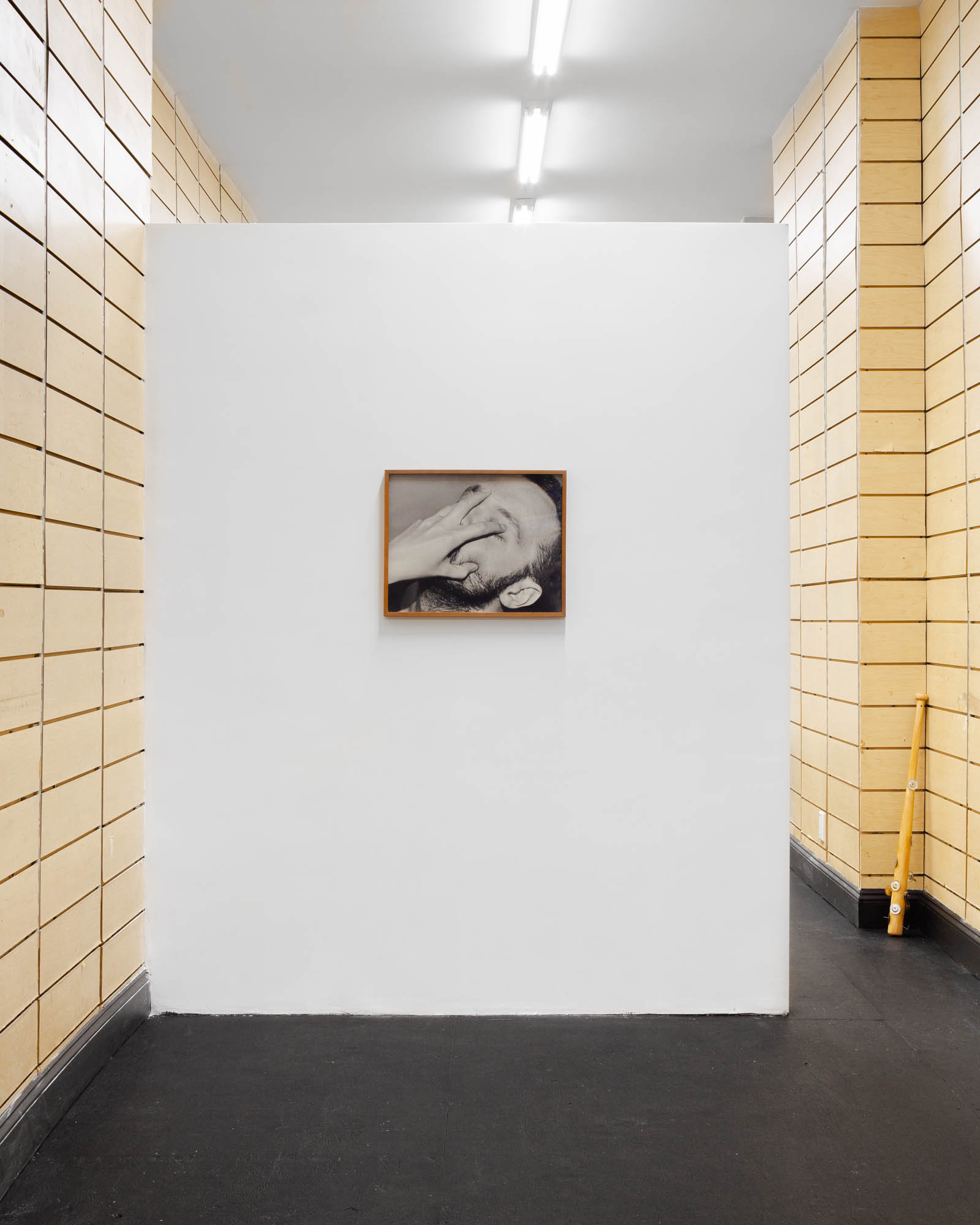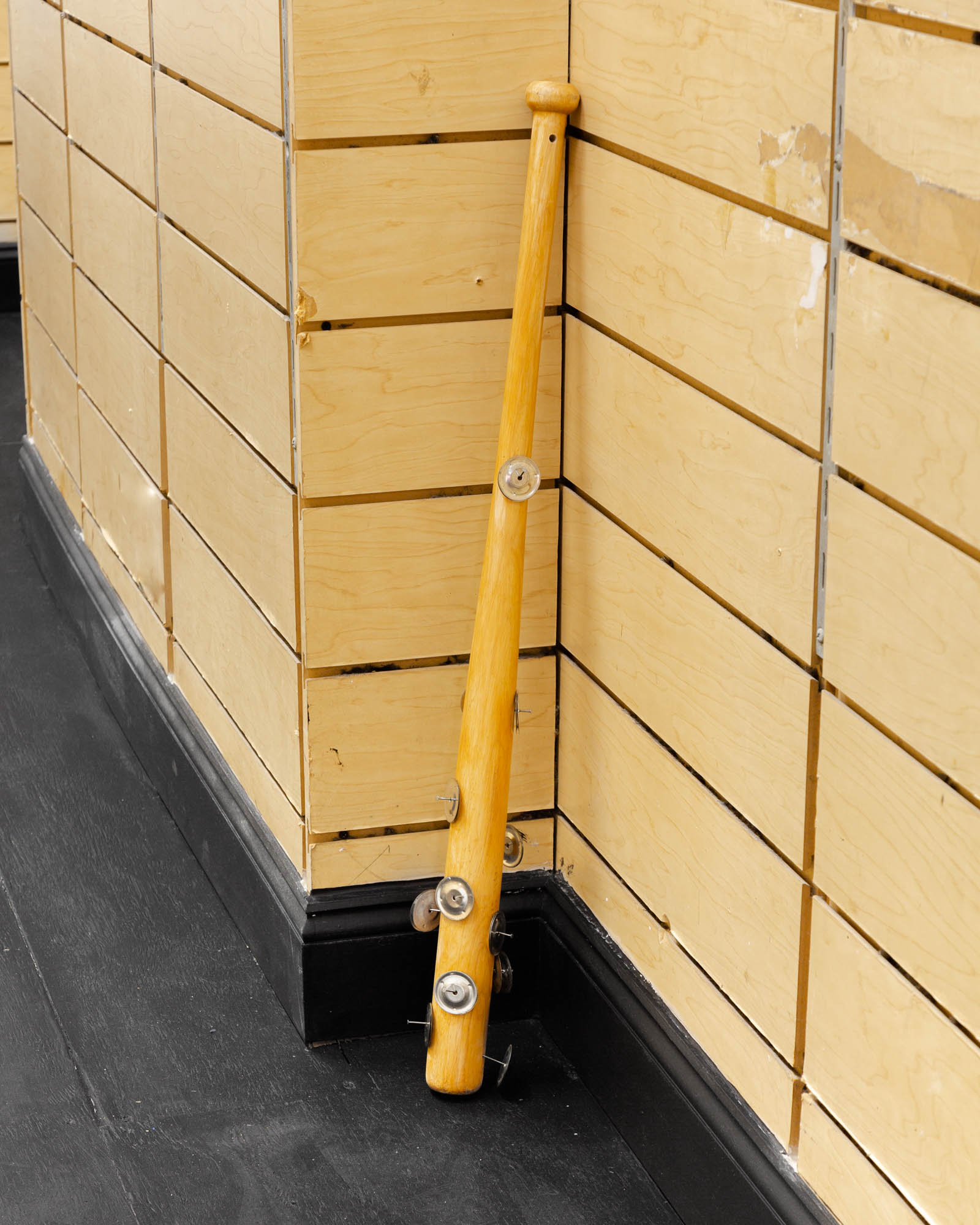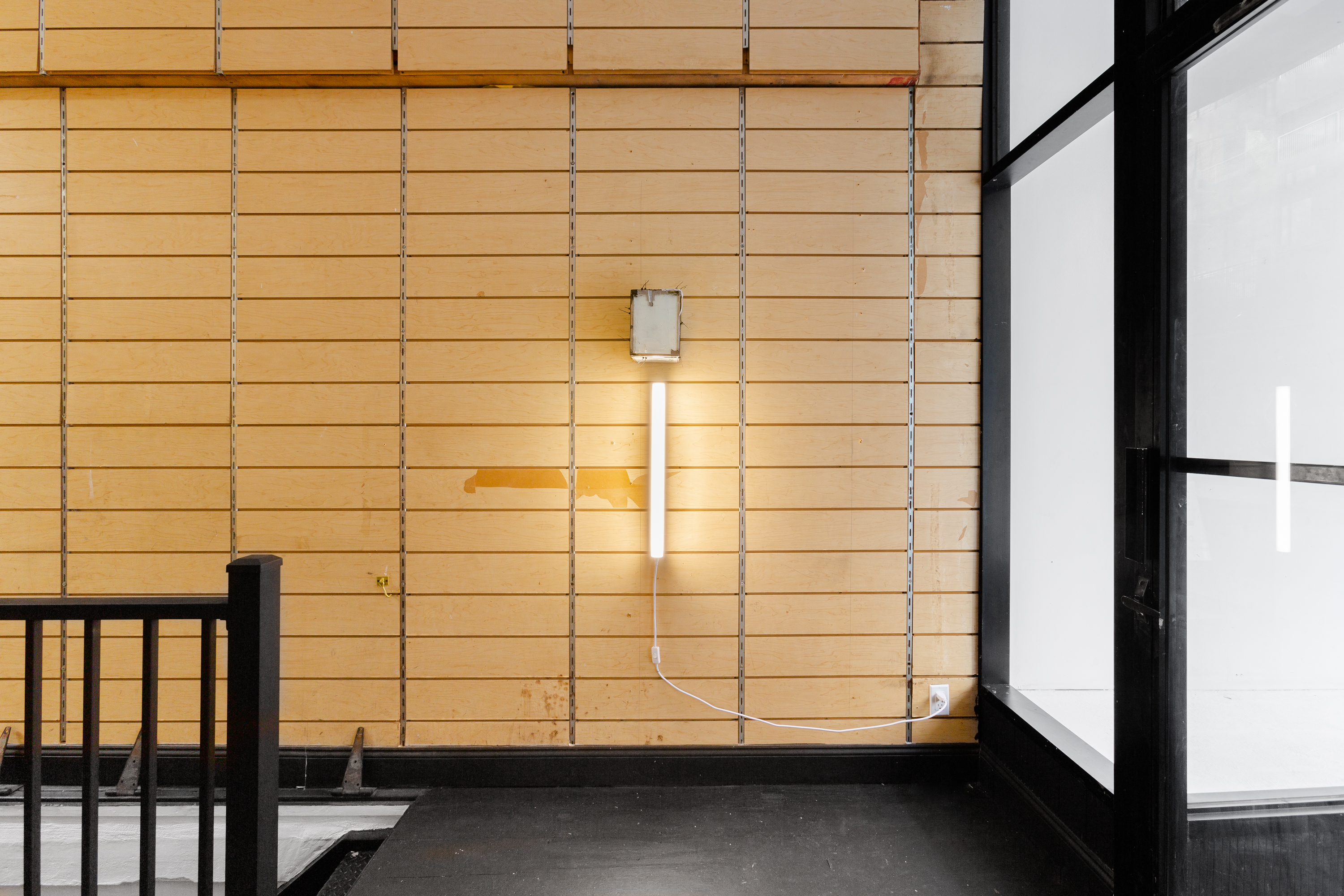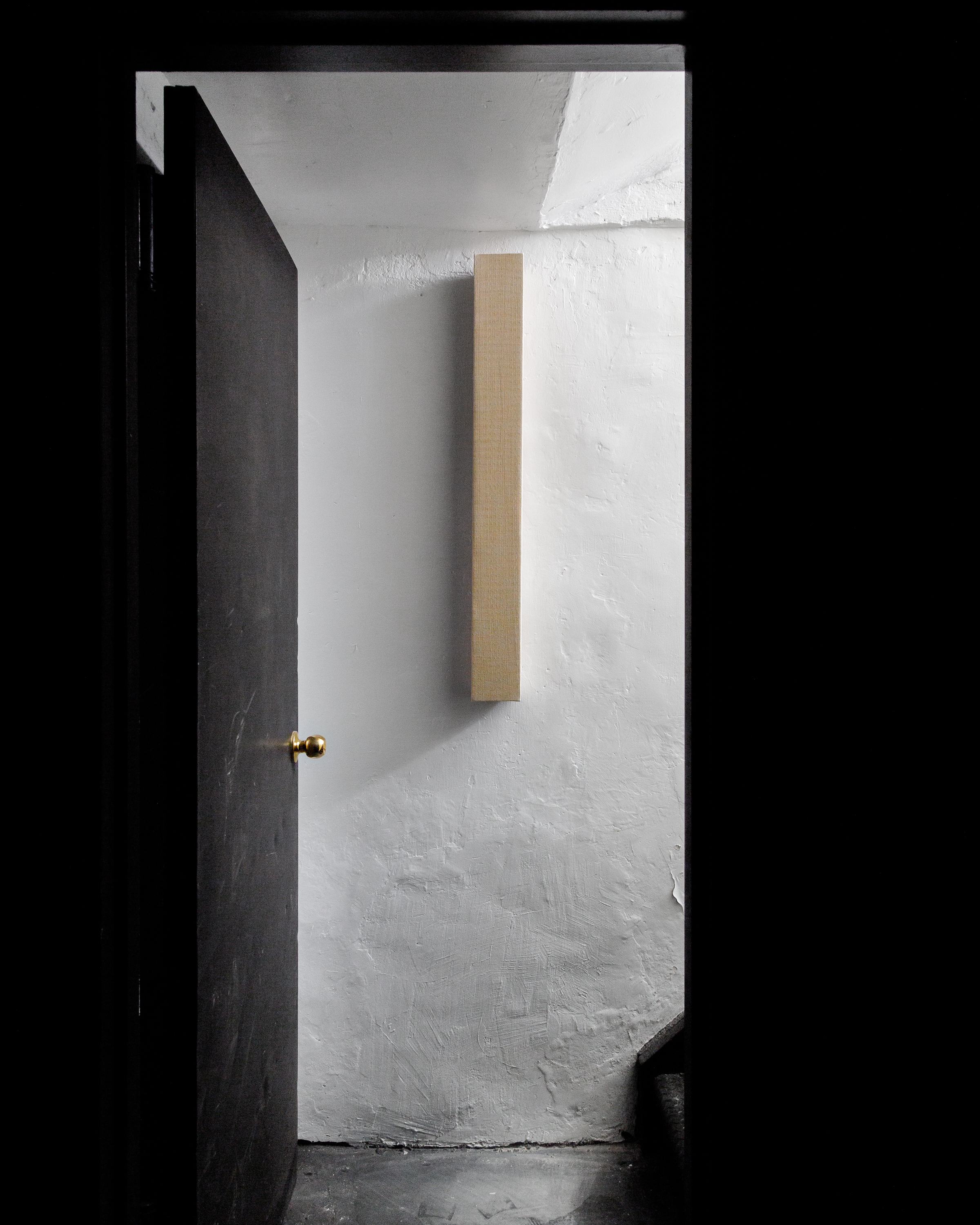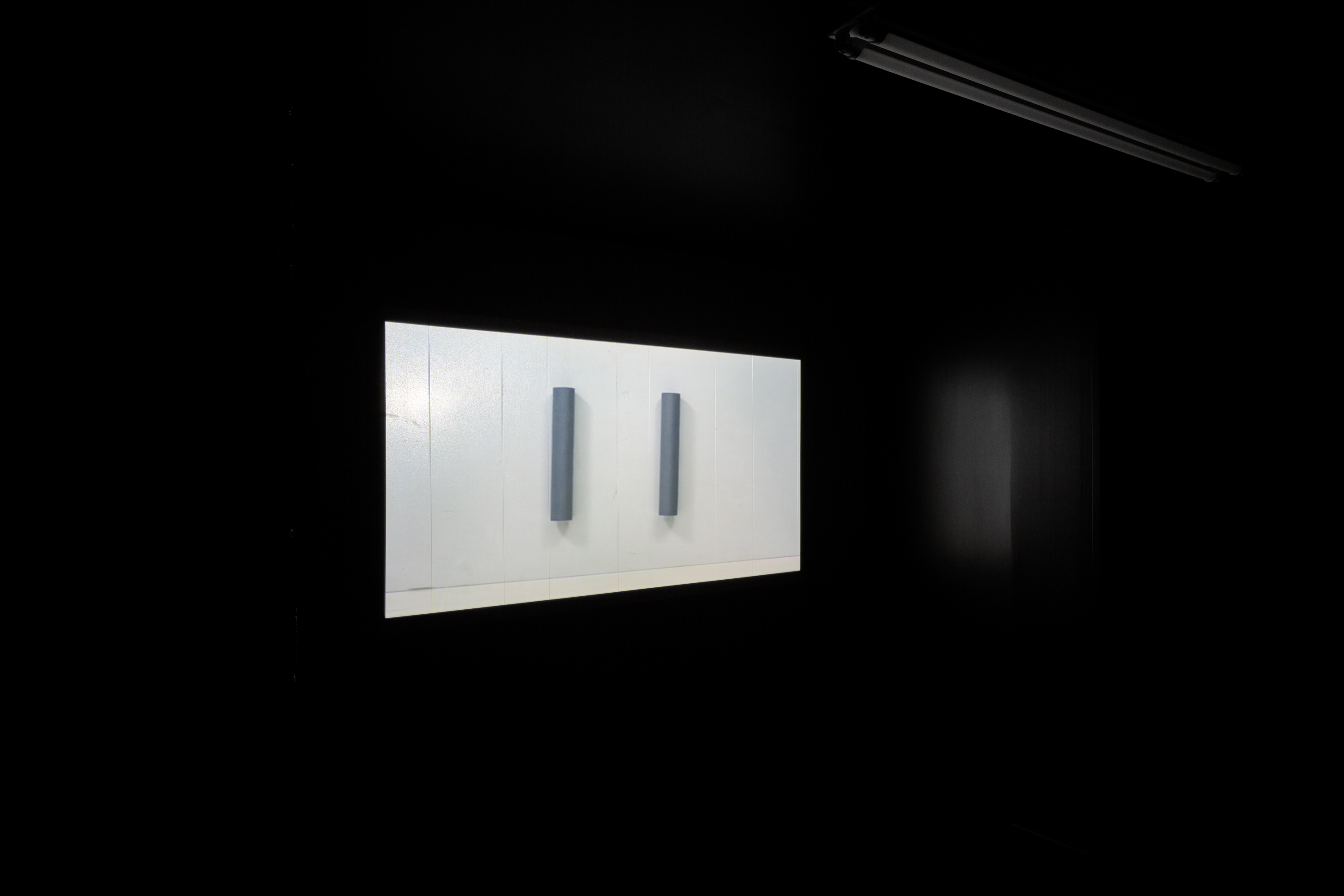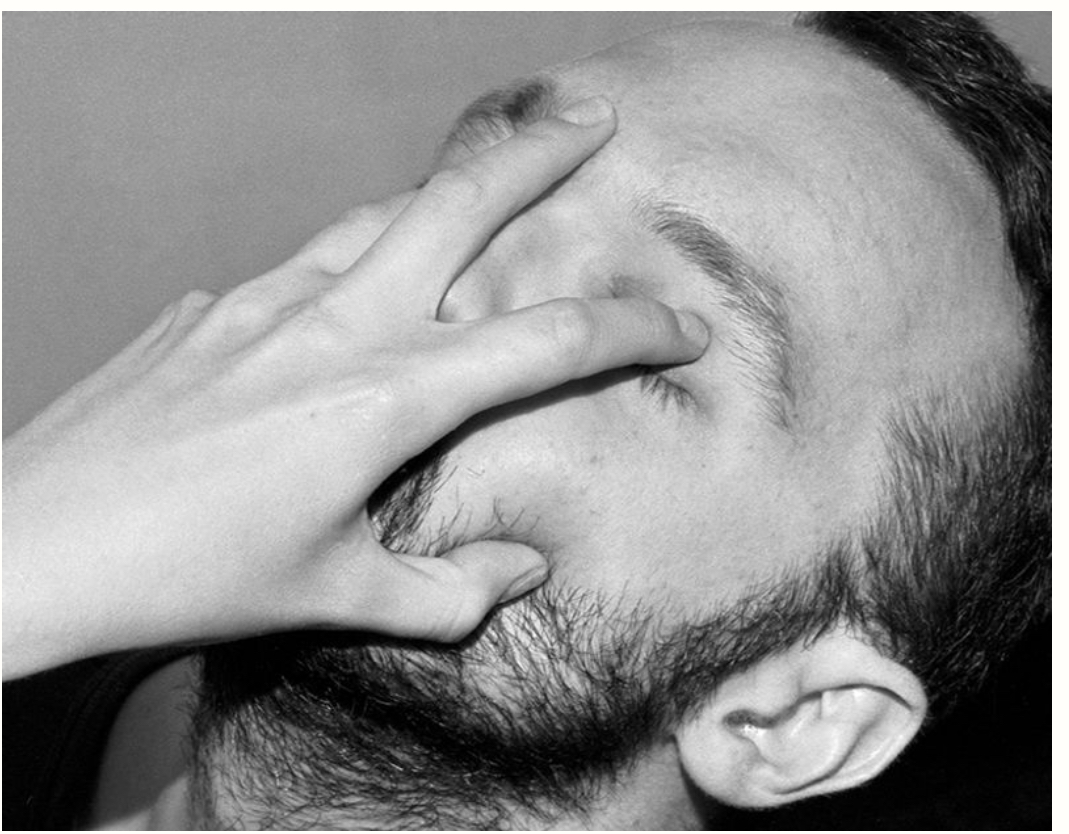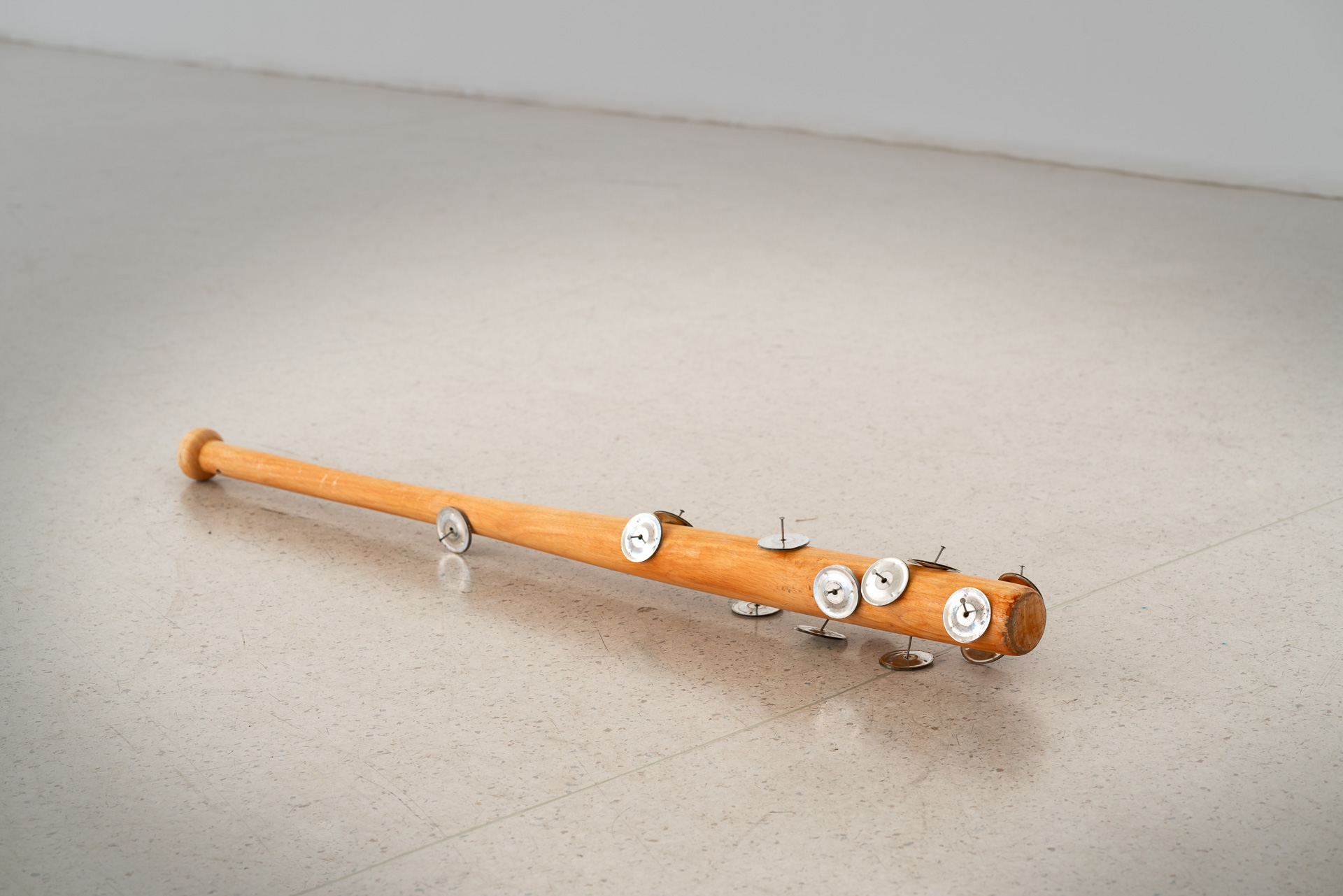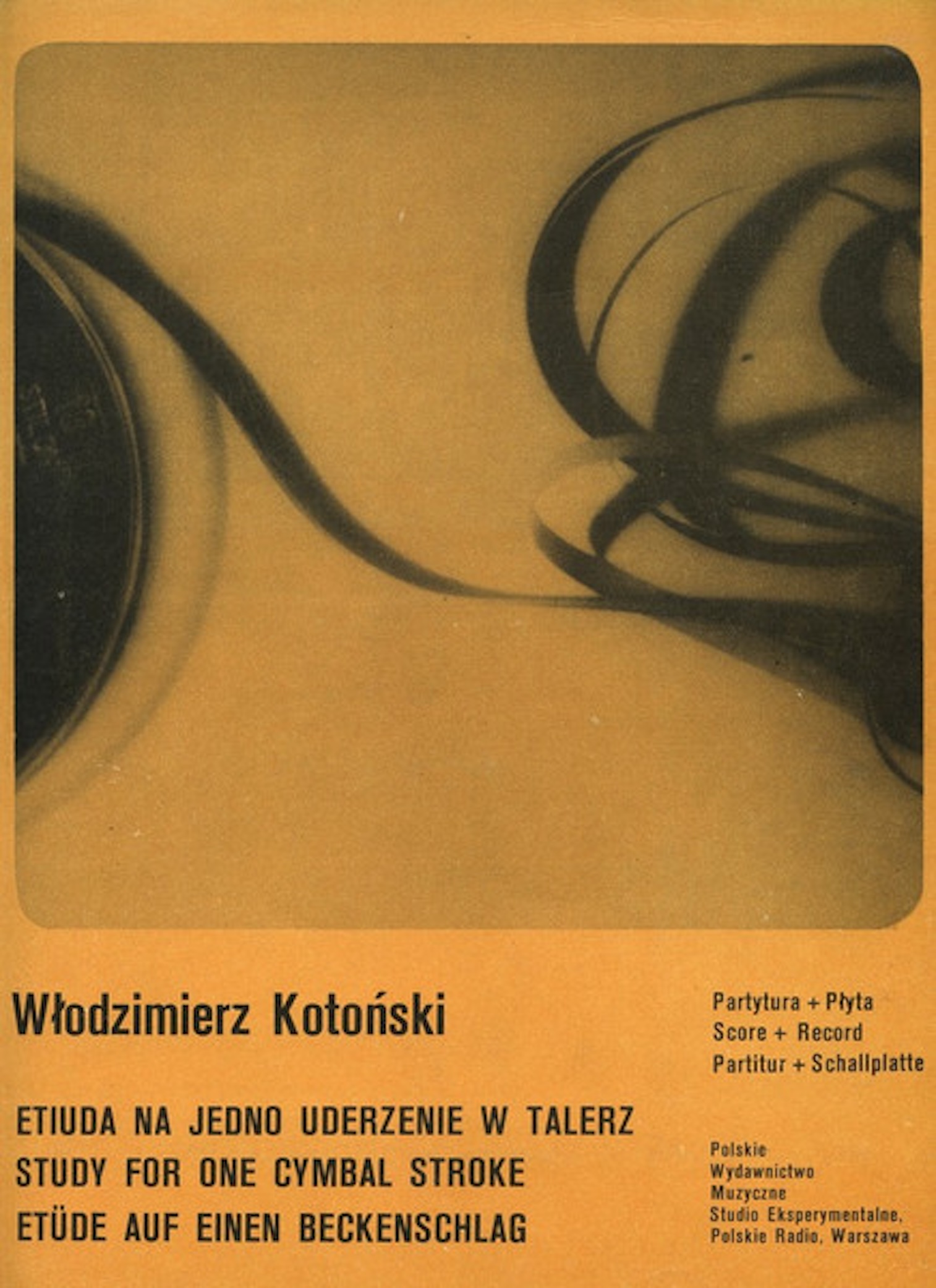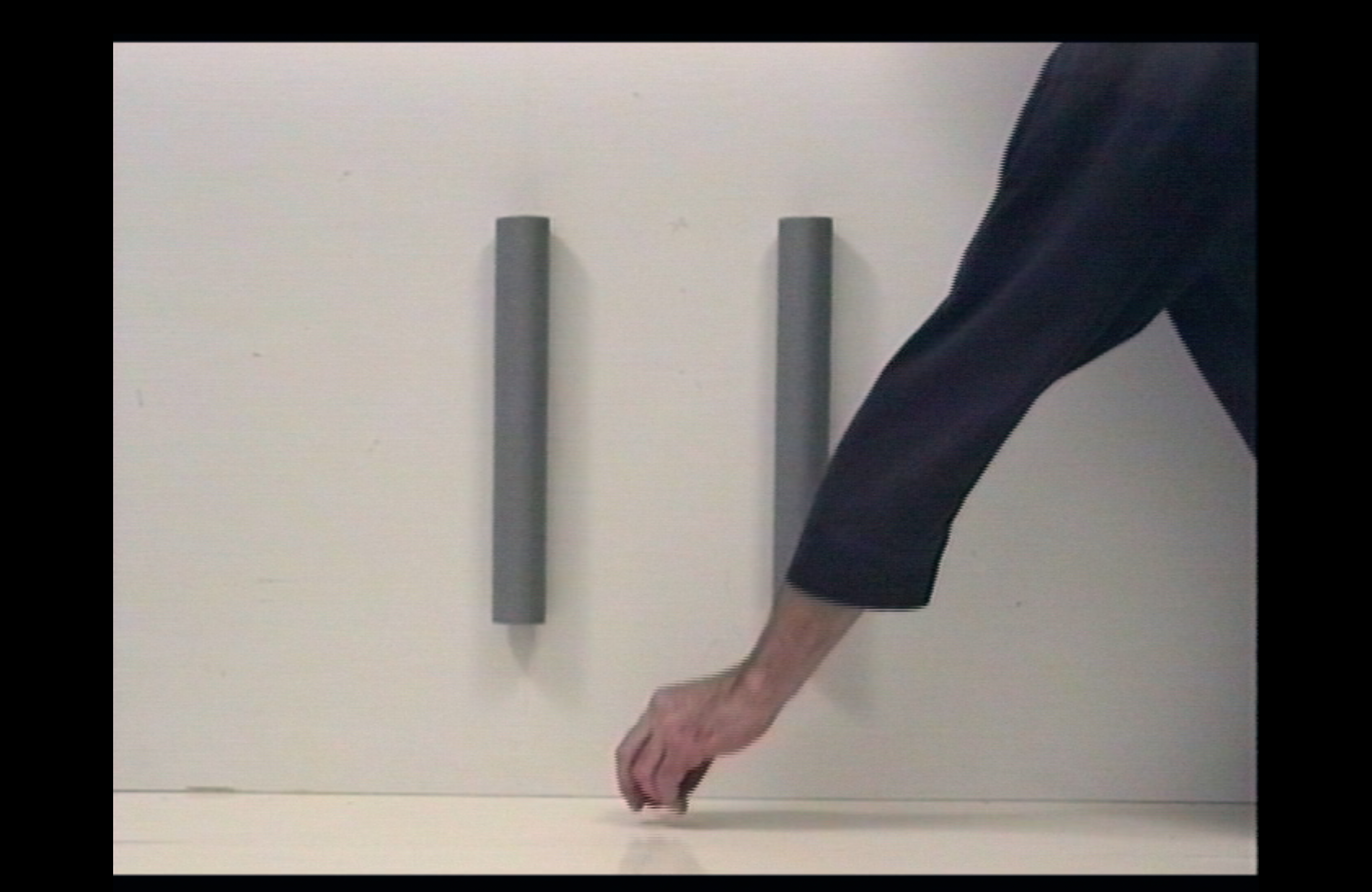–
In silence
Sylvie Hayes-Wallace
Igor Krenz
Włodzimierz Kotoński
K.R.M. Mooney and Winona Sloane Odette
Yoora Park
Joanna Piotrowska
Installation Views
Works
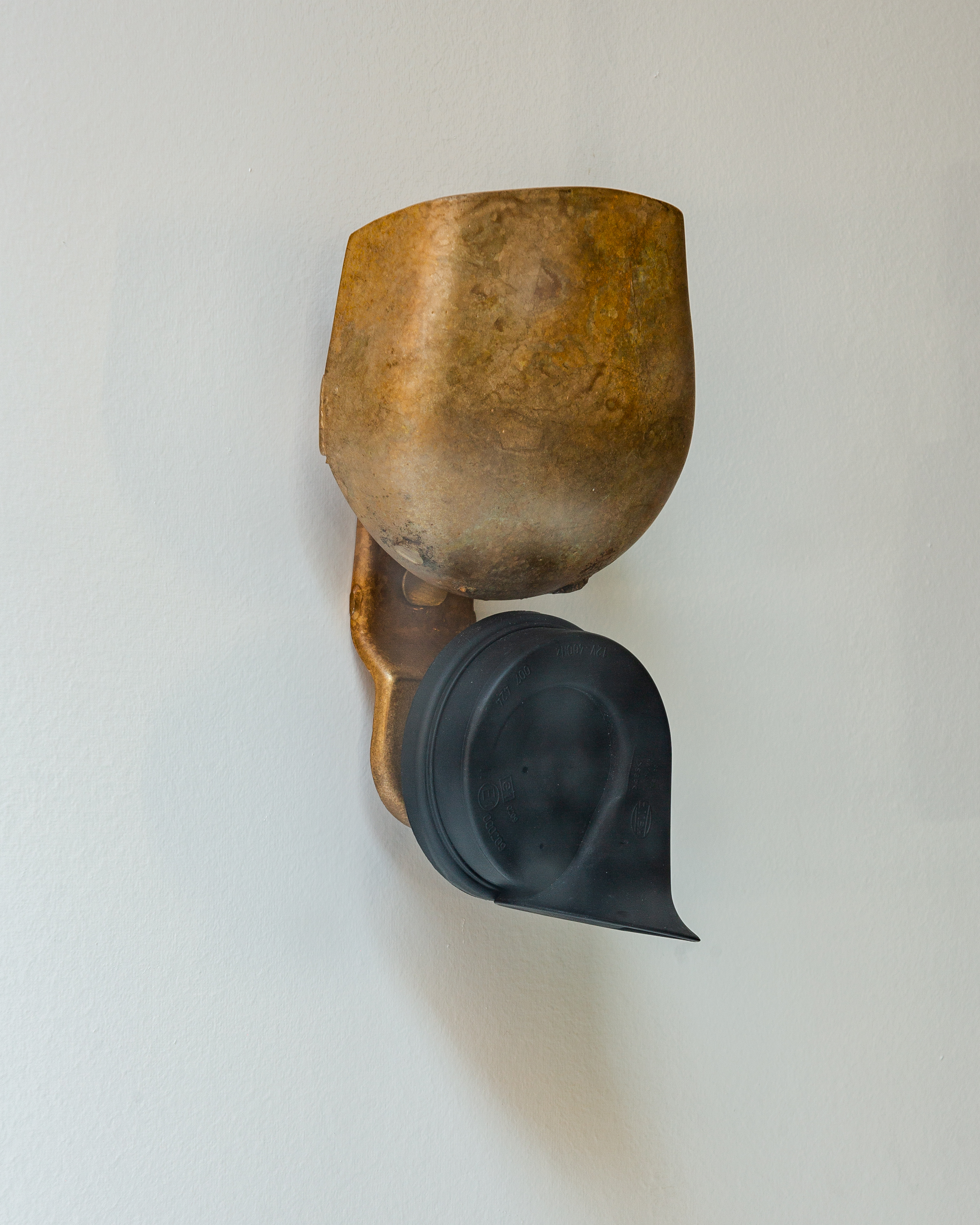
K.R.M. Mooney and Winona Sloane Odette (Resile) c. i, 2023 Bronze, brass, steel, polyurethane, 21 x 11.4 x 8.6 cm
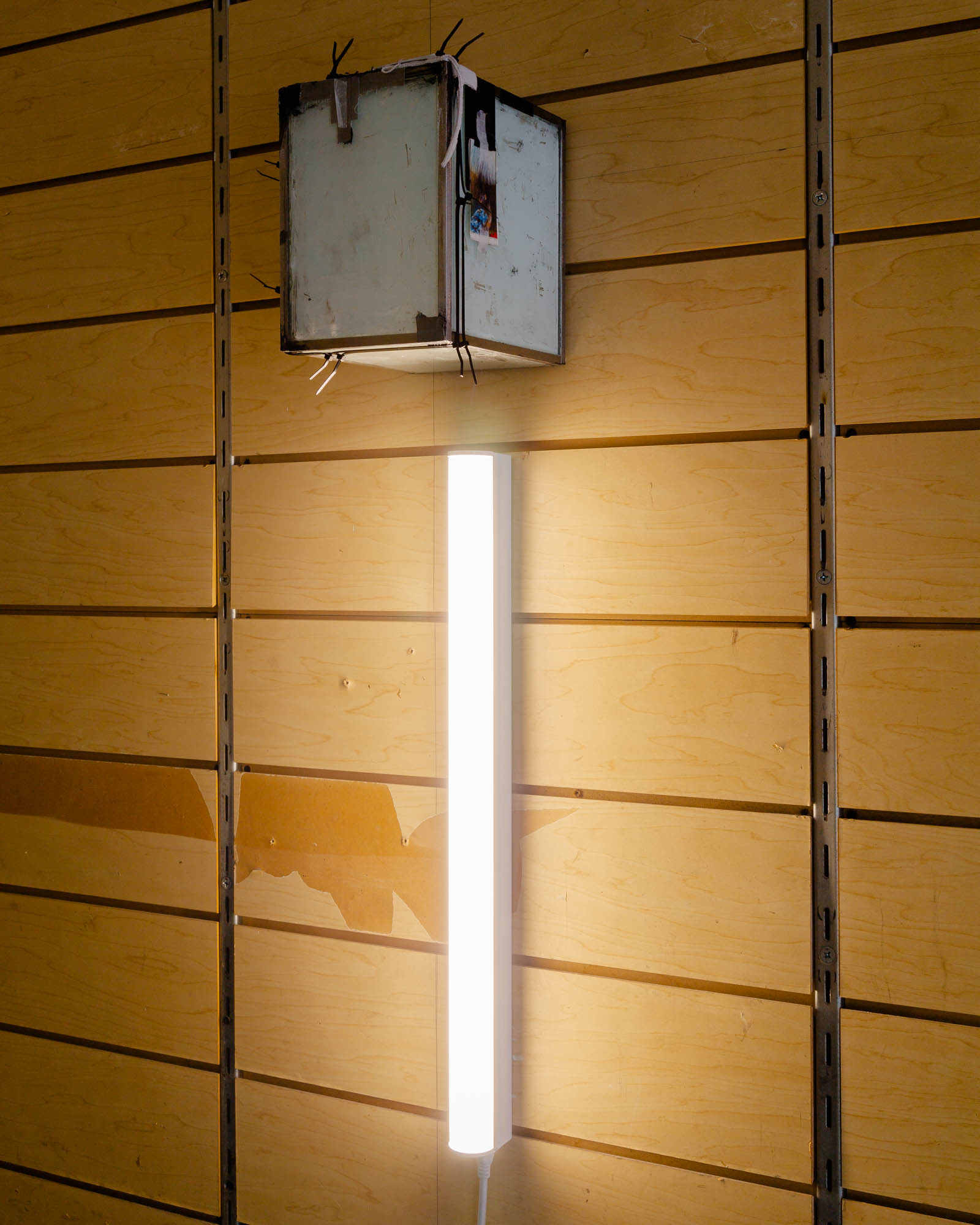
Sylvie Hayes-Wallace, Bodyless Feeling or Crown of Thorns, 2023-2024 Glass, steel, interior paint, adhesive, mother’s old t-shirt, old jeans, old postcards, gaffer’s tape, duct tape, acid-free cellotape, document repair tape, Jade glue, weatherproof sealant, fluorescent light, zip ties, hardware; based on the dimensions of the artist’s head and spine, 96.5 x 24 x 20.7 cm
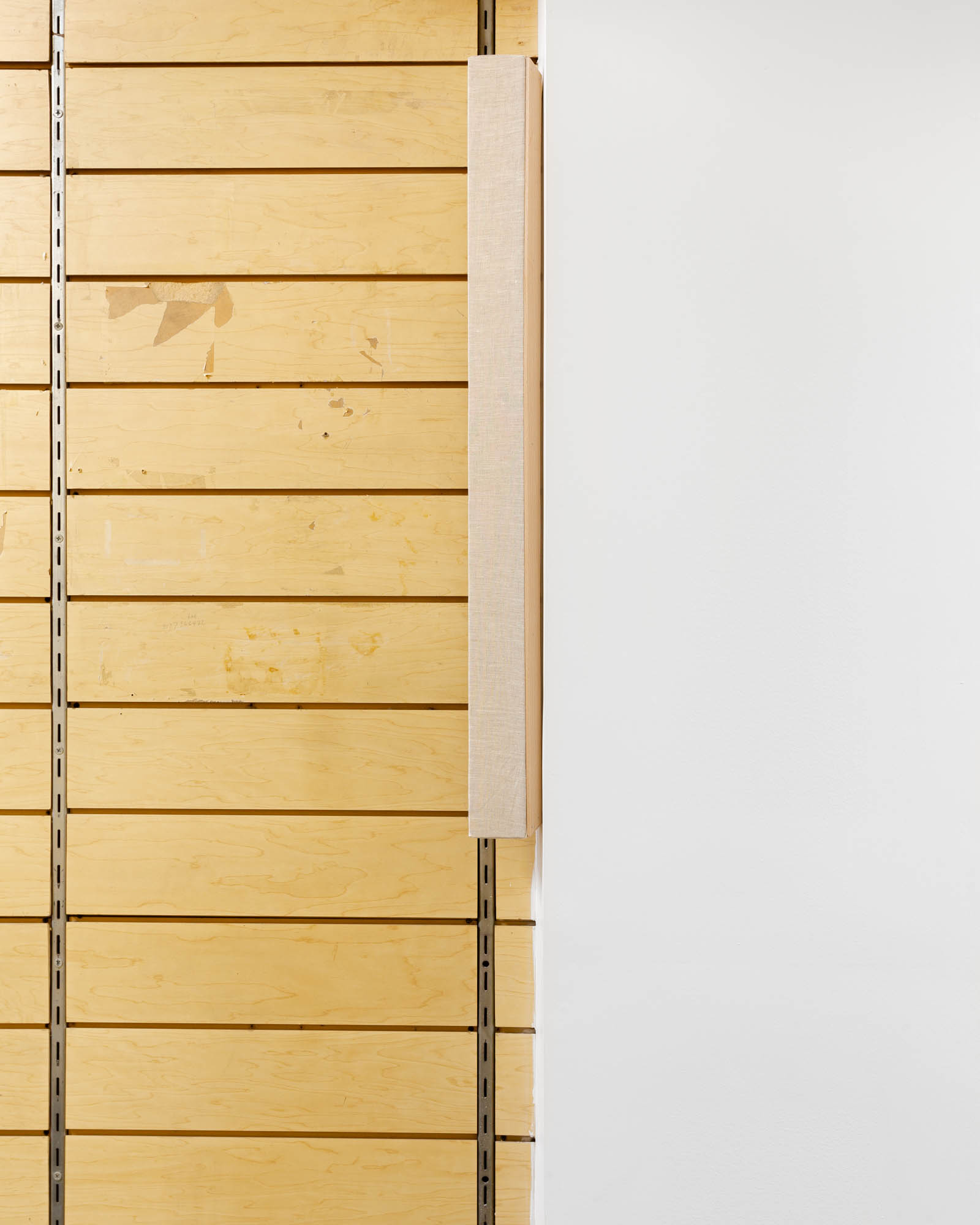
Beth Collar, Transparent Man. Split Tongue. Pre-paid. I used to run my finger down the dry, taught threads, breaking every stitch., 2021 Linen, pine, beech, pins, 105 x 9.5 x 11 cm
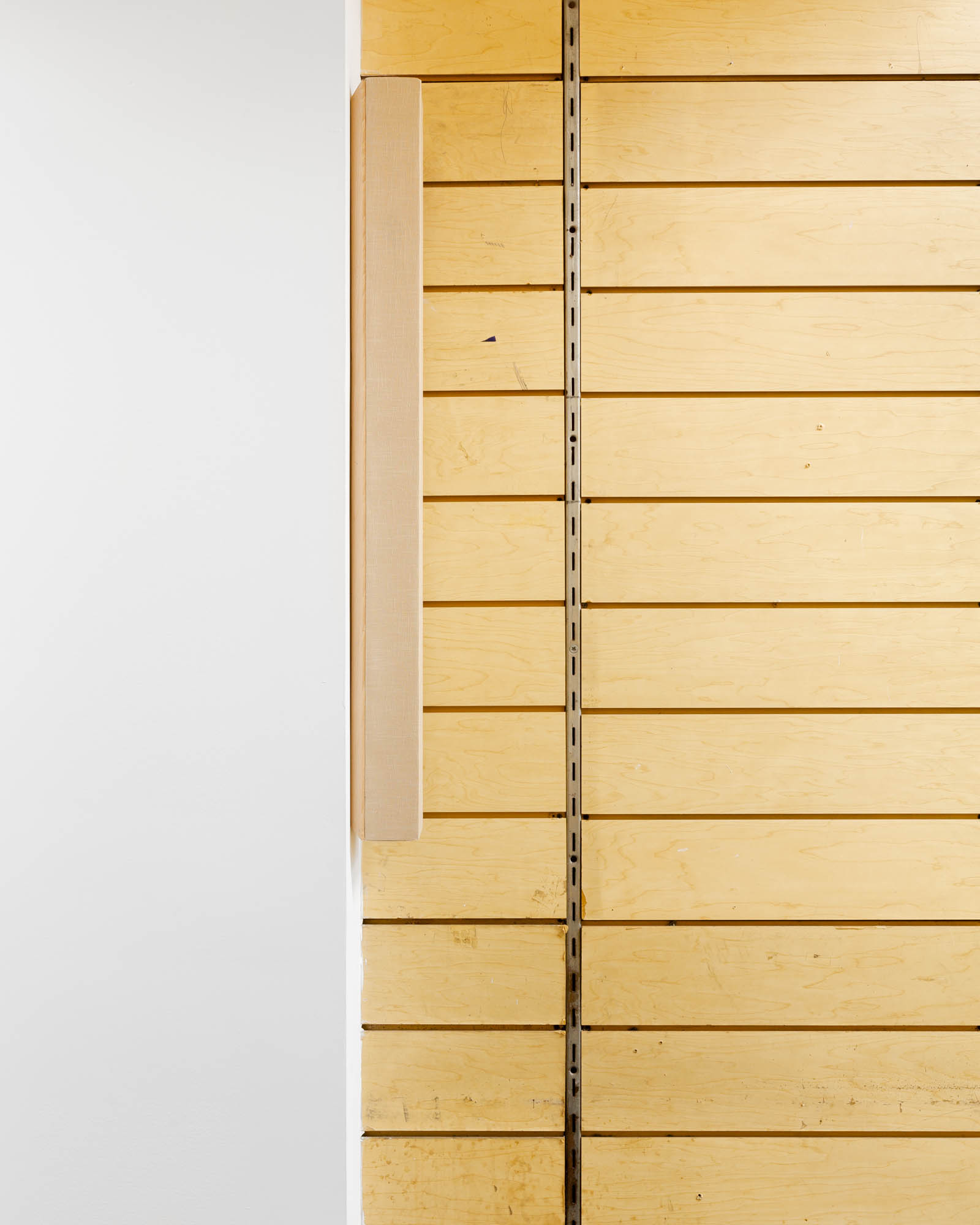
Beth Collar Transparent Man. Split Tongue. Pre-paid. I used to run my finger down the dry, taught threads, breaking every stitch., 2021 Linen, pine, beech, pins, 105 x 9.5 x 11 cm
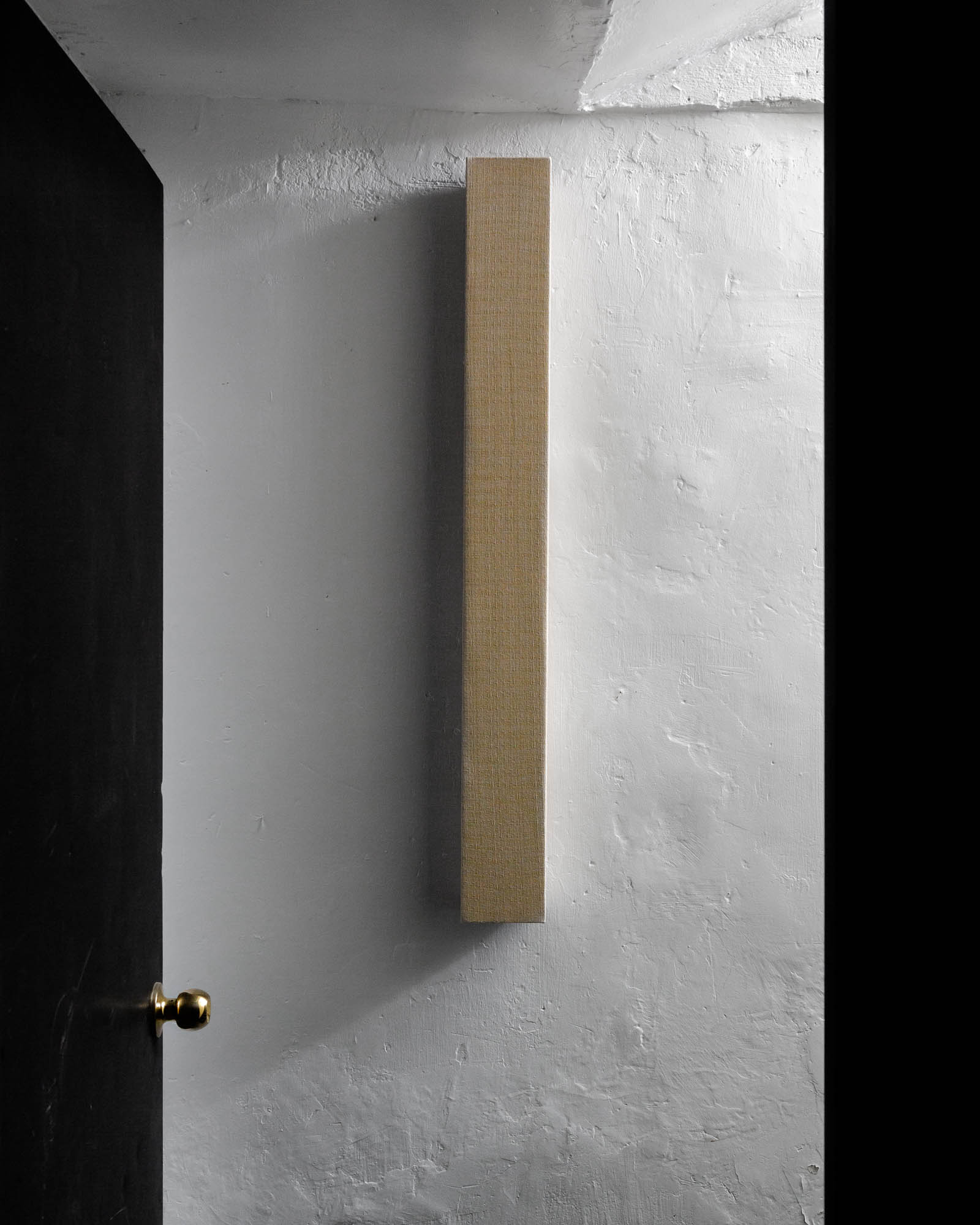
Beth Collar, Smoke from the campfires infuses the skin, clothes and all of the baggage. A sherbet fountain has a red and yellow paper wrapper pretending to be a stick of dynamite - the fuse is a long strip of black liquorice that sticks out of the end, exposed, 2021 Camel/silk, pine, beech, pins, 105 x 9.5 x 11 cm
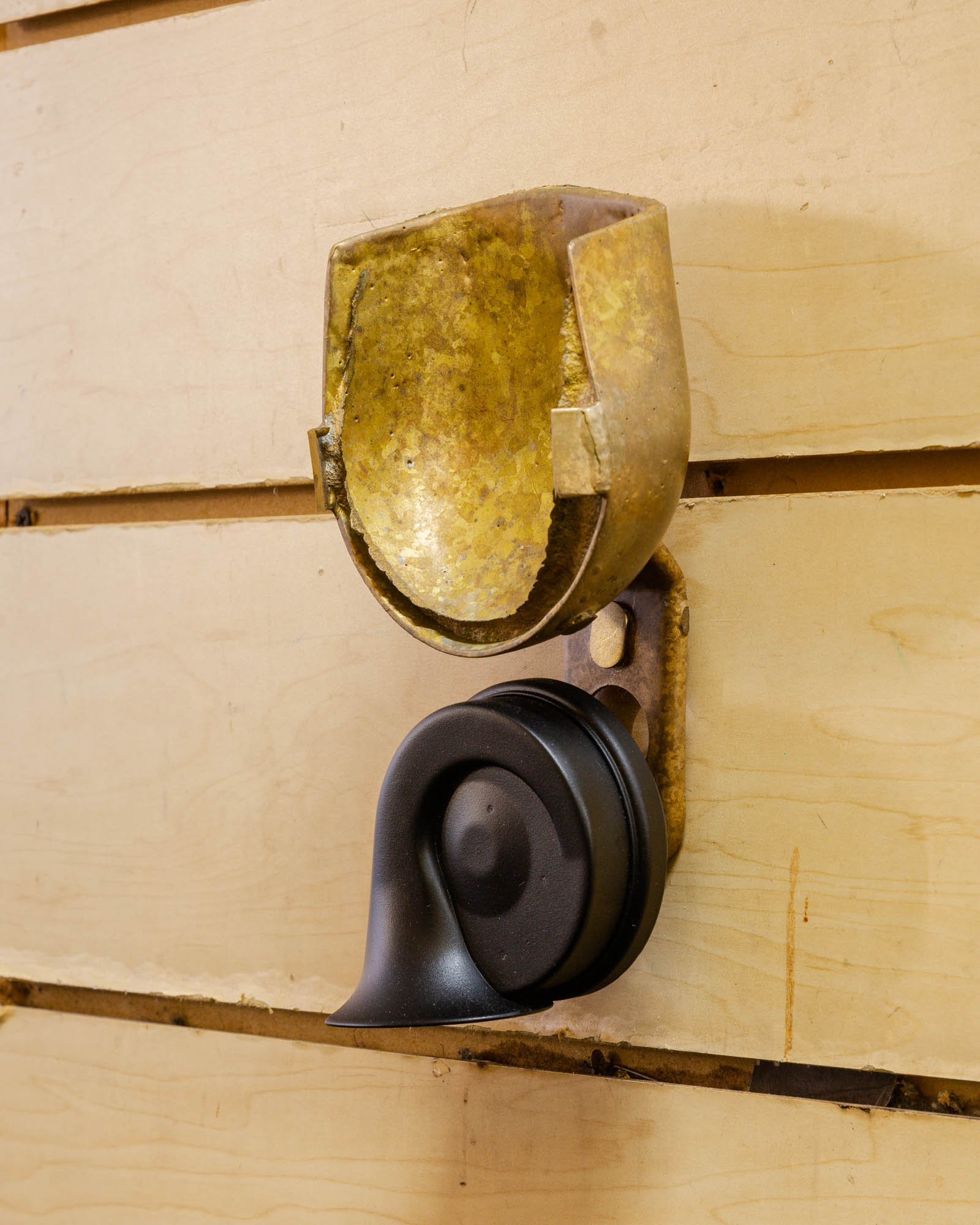
K.R.M. Mooney and Winona Sloane Odette (Resile) c. ii, 2023 Bronze, brass, steel, polyurethane, 21 x 11.4 x 8.6 cm
Press Release
Galeria Wschód and Galerie Khoshbakht are very pleased to present a group show In silence inaugurating their joint collaboration for the upcoming year in New York.
The show brings out the notion of a dialogue between two people, two figures, two minds, where silence is one of the key voices within it. In order for one’s mind to fully transparent onto someone else there has to be certain stillness and the will to see.In our minds the show „In silence” has a minimal structure, does not display a loud, chaotic stream of thoughts. It is rather calming, reflective, enigmatic – a certain comfort emerges from it, a comfort that establishes the beginning of enigmatic correspondence between two people.
Silent sound is central to a collaboration between K.R.M. Mooney ( (b. 1990) and Winona Sloane Odette (b. 1998), „(Resile) c.” Mooney confirms: the work incorporates a motorcycle “horn that’s been extracted from its cover which is the cast bronze form positioned above. In what might be conceived as a hierarchy of materiality, sound ranks low,” Mooney says. He and Odette were, therefore, interested in making sensible the tactility of sound as physical matter — as wiggly air, with a particular weight, density, duration, and timbre. These qualities may have analogs in the visual domain — size, texture, location, color, and so on – manuel arturo abreu, „Materializing process: on AUGUST 2023”
Sylvie Hayes-Wallace (b. 1994) makes work by way of accumulation: out of the “ephemera” of living, out of emotional pain, selves and their abstraction, ways of coping, and cultural controls therein. The material inscription of systems of thought into every psyche and surface is central to the artist’s interior self-portraits in lumpy cement, wire fencing, and industrial glass decorated with fangirlesque collages and to-do lists on outbursts of blue and magenta notes [Flash Art, 2024]
Bodyless Feeling or Crown of Thorns is combined out of a glass, metal cube considered to be the size of artist’s head, whereas the lightbulb positioned directly below is the lenght of her spine. The light simultaneously illuminates the interior of the glass cage but when switched off it creates a certain notion of withholding.
Włodzimierz Kotoński (1925 – 2004) polish composer and experimental musician, explains the work Study on One Cymbal Stroke:
In contrast with the vast majority of the earlier works of concrete music, the material was treated in a very strict way which was modelled on serial electronic compositions. The sound of the cymbal was filtered on five bands of differing widths and transposed on eleven pitches, in accordance with the adopted scale. A specific time scale of eleven durations and six articulation methods was created based on the ratio of the sound duration to the pause that followed within the sound’s time unit; a corresponding dynamic scale of eleven degrees and six forms of envelopes (three attacks and three releases). The entire work was composed in accordance with the principles of total serialization.
Beth Collar‘s (b. 1984) works are situated between performance, video, drawing and sculpture, whereby the genres are mutually dependent and not detached from each other. They are characterised by a methodical examination of architecture, power, gender and art history, and the absence of women in that history.
The exhibited speakers’ series came from my time in Rome where I was thinking about that minimal and unfortunate necessity of the church speaker. It almost pretends to merge in to the architecture. While in England they always feel like part of the furniture, in Rome they were sat at odds with the baroque or more ancient Catholic interiors.They sat for me as a reminder of the coming Protestant and later Puritan shifts. And connected me to my dreary Cambridgeshire home.
The artist found herself connecting their form with the suggested voice of god, voice of his holiness, voice of the word, voice of the father.
Igor Krenz (b. 1959) since the beginning of the 1990s, he has been creating minimalistic works, saturated with irony and a specific, absurd sense of humor. Krenz’s videos stand out for a tight connection of image and sound. The titles of his works is a thesis later proved by the contents of the film. In the years 2001 – 2010, he was a member of the art group Azorro.
The film Double Disappearance of the Ball in Parallel Space stands out among other works in which the artist makes use of his typical laboratory-like environment. The presented situation is quite particular in the way it escapes rational grasp. The featured film-sign is marked for an unbearable incongruence of references, which justifies suspicion of manipulation. By calling into being somewhat of a flat, material gesture, the artist addresses the critique, developed by the creators of structural cinema, laying bare the potential of building illusion of reality characteristic of the film medium.
Joanna Piotrowska (b.1985) work examines the human condition through performative acts, photography, and film. Piotrowska’s psychologically charged photographs probe human behaviour and the dynamics of familial relations, exploring intimacy, violence, control, and self-protection. The artist reveals moments of care as well as hierarchies of power, anxieties, and imposed conventions that play out in the domestic sphere. She explores the past and the present, showing all the inequalities of power and psychological drama, and translating the gestures and everyday intimate behaviors into new scenarios – giving them an almost caricature-like quality. Piotrowska uses her surroundings to show the anxiety and psychological tension of the domestic space, rather as a document of a performance than a documentary image.
Yoora Park (b. 1991), in particular, relates sound in the broadest sense to analogue space as acoustic sculptures and juxtaposes them with materialised equivalents. Based on the assumption that every material body carries a specific sound, she aims to disrupt these inherent vibrations and reconstruct them as sound from the ground up. Refering to her work Think but this, and all is mended:
Bells have played a significant role in many cultures for centuries as a bridge between sound, politics, architecture, spirituality. The incredible set of Bianzhong bells of Marquis Yi were buried sometime around 433BC, made to be audible not by the ear but by the mind. Another case of unheard instruments are bells installed on Victorian safety coffins. The general fear of premature burial led to the invention of safety devices which could be incorporated into coffins. Most consisted of some type of device for communication to the outside world, such as a cord attached to a bell that the interred person could ring should they revive after the burial.
